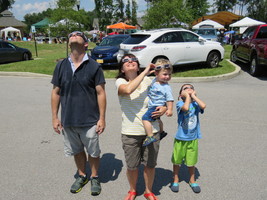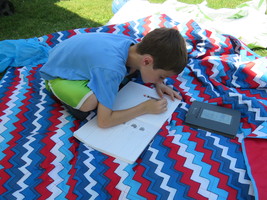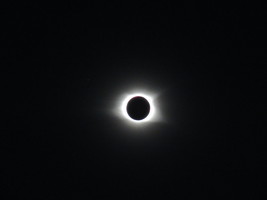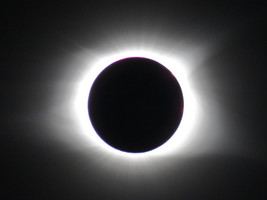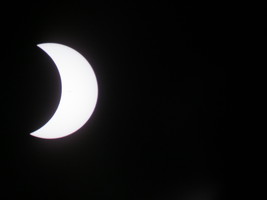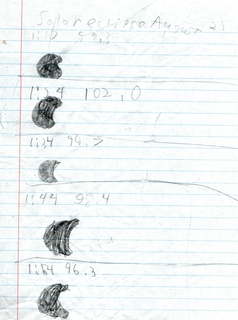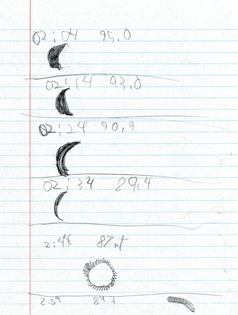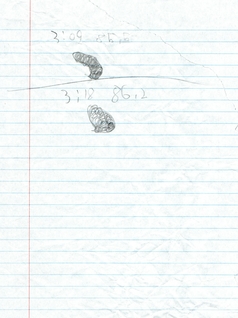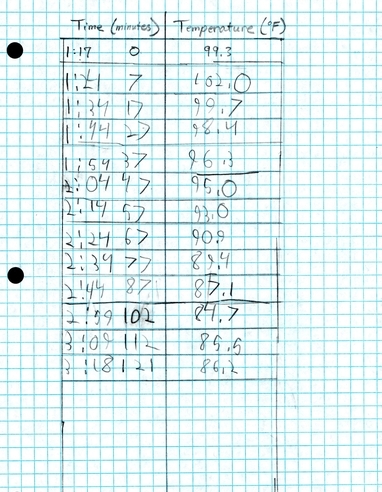The Solar Eclipse of August 21, 2017
Data Table


My data table has time and temperature between data points. I brought a weather station to the park to read time and temperature. Time was in units of minutes. I started collecting data at 1:17 in the afternoon. I converted my data to time elapsed to make plotting it easier. For example, I made 1:17 into 0. Temperature was in units of degrees Fahrenheit.
Line Plot


My graph (line plot) shows how temperature changes with time during the eclipse. Time was on the X axis (left to right) and temperature was on the Y axis (up and down). When the eclipse started the temperature went down; I think this is because the Moon cast a shadow. On the line plot the temperature went down in a straight line. The temperature went down for about 1:30 because the Moon was covering more and more of the Sun. Right after this was totality. After totality the temperature went up again because the Moon was uncovering the Sun.
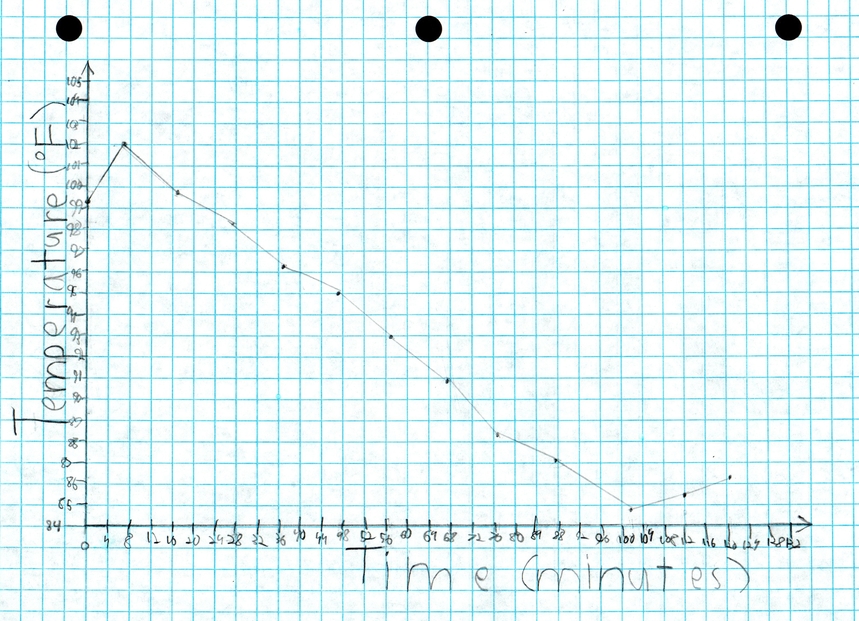


 I created a line graph that summarizes the August 21, 2017 solar eclipse. I used data to create my graph. I studied it because I thought it was interesting and cool. I went to Doko Meadows Park in
I created a line graph that summarizes the August 21, 2017 solar eclipse. I used data to create my graph. I studied it because I thought it was interesting and cool. I went to Doko Meadows Park in 